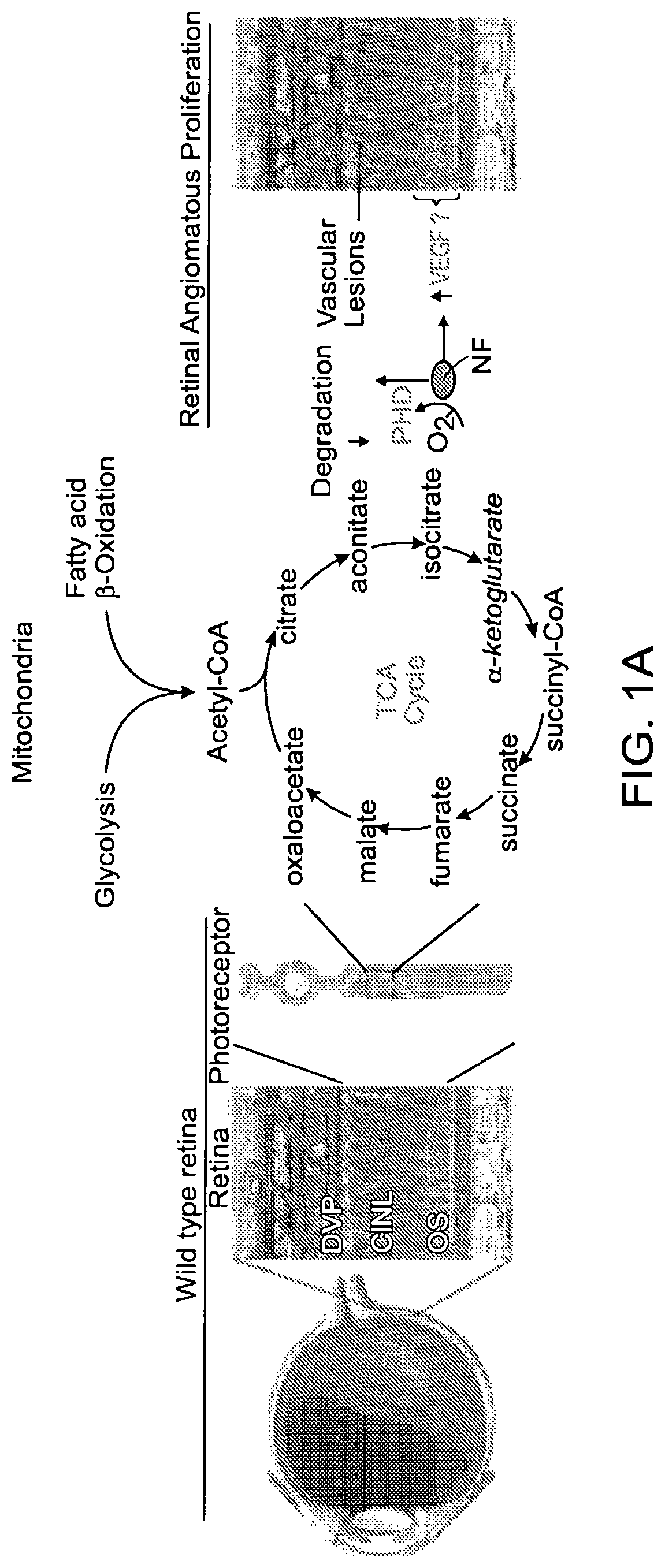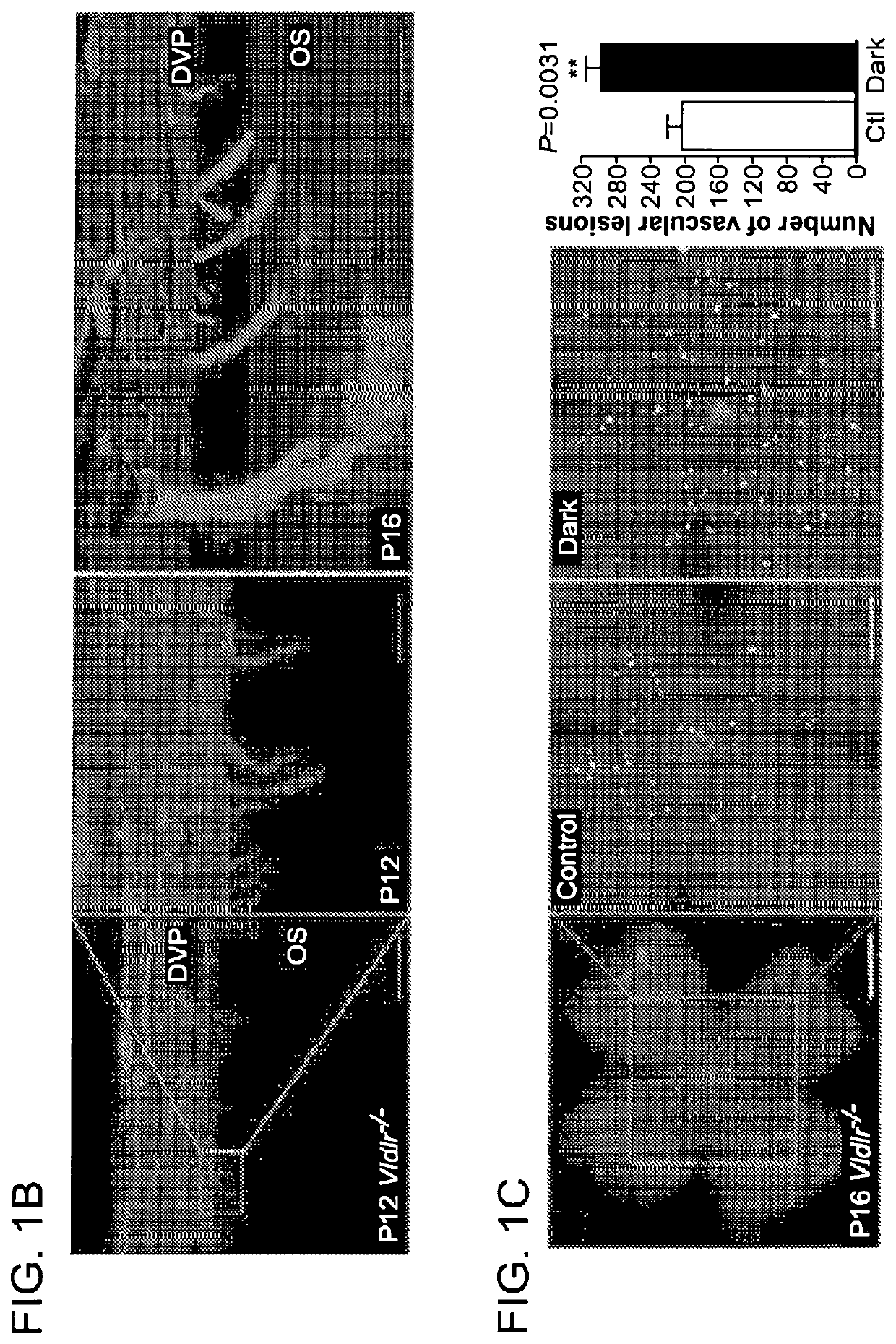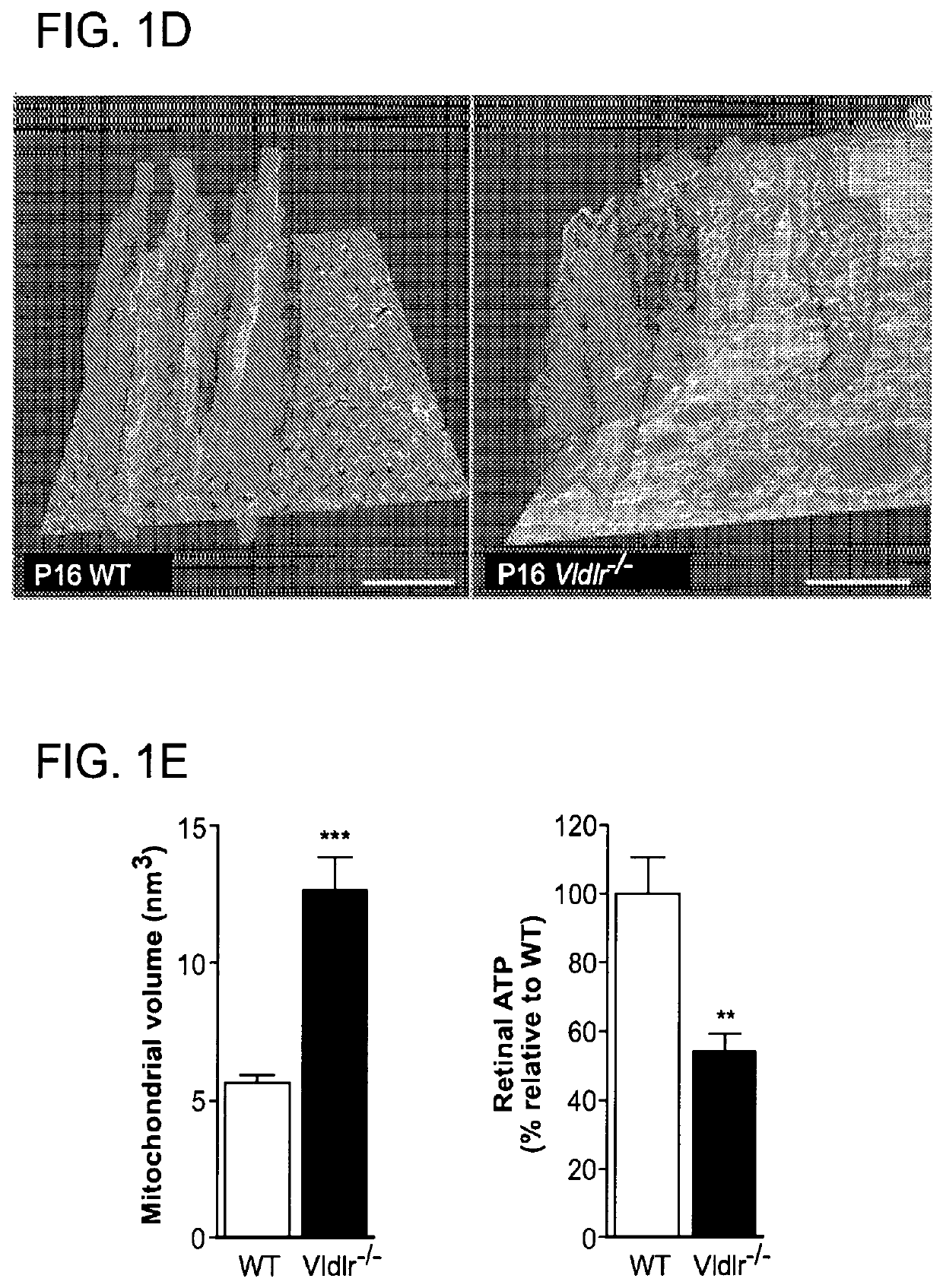Ffa1 (GPR40) as a therapeutic target for neural angiogenesis diseases or disorders
a neural angiogenesis and therapeutic target technology, applied in the direction of drug compositions, instruments, metabolic disorders, etc., can solve the problem of amd or mactel currently without cur
- Summary
- Abstract
- Description
- Claims
- Application Information
AI Technical Summary
Benefits of technology
Problems solved by technology
Method used
Image
Examples
example 1
and Methods
Animals
[0239]All studies adhered to the NIH guide for the Care and Use of laboratory animals, the Association for Research in Vision and Ophthalmology (ARVO) Statement for the Use of Animals in Ophthalmic and Vision Research and were approved by the Institutional Animal Care and Use Committee at Boston Children's Hospital. Vldlr knockout mice (Vldlr− / −; Jackson Lab Stock: 002529) were crossed with wild type C57Bl / 6 mice to obtain heterozygous breeders for littermate controlled experiments. Vldlr− / − mice were also crossed with Ffar1 knockout mice (Ffar1− / −)1 to ultimately obtain Vldlr− / − / Ffar1− / + heterozygous breeders and double knockout mice (Vldlr− / − / Ffar1− / −). Pups weighing less than 5 grams or more than 7 grams at postnatal day (P)16 were excluded (Stahl, A., et al. Am J Pathol 177, 2715-2723 (2010)). Littermate Vldlr− / − pups were treated from P8 to P15 with WY164363 (50 mg / kg once daily, intraperitoneal; Sigma), GW9508 (14 μM, once daily intraperitoneal; Cayman), TAK-...
example 3
ds Contributed to Retinal Energy Production in Addition to Glucose and were Likely Also Deficient in Retinas
[0263]To explore the etiology of energy deficit fostering neovascularization, the contribution of FA and glucose to WT retinal energy production (FIG. 6A) was examined. The long-chain FA palmitate fueled mitochondrial β-oxidation in retinal explants, doubling oxygen consumption rates (OCR). Etomoxir-induced inhibition of FA transport into mitochondria abrogated mitochondrial respiration, confirming that FA β-oxidation contributes to retinal energy metabolism (FIGS. 2A-2B, and 6A-6C).
[0264]The contribution of glucose oxidation was further examined, and retinal glucose was also oxidized by mitochondria as efficiently as FA (FIGS. 6D-6F). However, as reported by Warburg, Cohen and Winkler (Cohen, L. H. & Noell, W. K. J Neurochem 5, 253-276 (1960), and Winkler, B. S. J Gen Physiol 77, 667-692 (1981)), the vast majority of glucose (87%) was converted to lactate by glycolysis rather...
example 4
of Fatty Acid Sensing G-Protein Coupled Membrane Receptors
[0267]An abundance of lipids in Vldlr− / − serum was postulated to signal through lipid sensors to reduce glucose uptake and help control fuel supply to the retina (FIG. 3A). Known FA sensing G-protein coupled membrane receptors (GPCR) in retina were screened. FFA1 was the most abundantly expressed FA receptor in WT and increased further in Vldlr− / − retinas, particularly in photoreceptors (FIGS. 3B and 3C). FFA1, first discovered in the pancreas (Itoh, Y., et al. Nature 422, 173-176 (2003)), governs glucose transport and insulin secretion (β-islet cells) (Kebede, M., et al. Diabetes 57, 2432-2437 (2008), and Alquier, T., et al. Diabetes 58, 2607-2615 (2009)). High pancreatic FFA1 expression suppressed expression of the main endocrine pancreas glucose transporter, Glut2 (Steneberg, P., et al., Cell Metabolism 1, 245-258 (2005)). Ffar1 has also been localized in brain, where its function is not well defined Honoré, J.-C., et al. ...
PUM
| Property | Measurement | Unit |
|---|---|---|
| diameters | aaaaa | aaaaa |
| temperature | aaaaa | aaaaa |
| flow rate | aaaaa | aaaaa |
Abstract
Description
Claims
Application Information
 Login to View More
Login to View More - R&D
- Intellectual Property
- Life Sciences
- Materials
- Tech Scout
- Unparalleled Data Quality
- Higher Quality Content
- 60% Fewer Hallucinations
Browse by: Latest US Patents, China's latest patents, Technical Efficacy Thesaurus, Application Domain, Technology Topic, Popular Technical Reports.
© 2025 PatSnap. All rights reserved.Legal|Privacy policy|Modern Slavery Act Transparency Statement|Sitemap|About US| Contact US: help@patsnap.com



